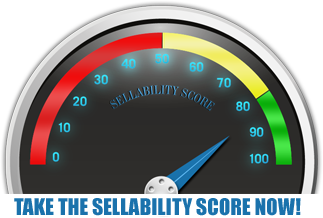Article written by John Wagner, Managing Director at 1StWest Mergers and Acquisitions, and provided courtesy of Axial
Let’s say you were doing business with just one or two very large customers. Your business could, quite rightly, be categorized as overly dependent on too few sources of income. The reason is simple: Any move that those two customers made, good or bad, up or down, would cause an equal reaction in the fortunes of your company, good or bad, up or down. And if one suffered a catastrophic misfortune, so would your company. That may be stating the obvious. After all, you didn’t have to go to Harvard B school to see the importance of spreading risks like these. And that’s what most business do. They engage in transactions with any many businesses as possible, so that the negative performance or outright failure, of any one customer wouldn’t have an outsized negative impact on the provider company.
Yet as businesses scramble to make their numbers, and sales people do what sales people naturally do (book orders, any order, from anyone; all money is green) those sales are often done without respect to what percentage of your gross revenue may be concentrated into your top-volume customers. However, this customer concentration metric is especially important when you take your company to market to seek an acquirer.
IM Disclosures
Any decent Informational Memorandum (a.k.a. “deal book”) that you and your investment banker prepare to bring your company onto the market for acquisition should have a section that declares your Customer Concentration. It’s a very revealing section of the Informational Memorandum indeed, because every potential acquirer will want to review what percent of your business would cease if you lost a few of your biggest customers.
Is heavy concentration at the top of your customer list truly a terrible thing? Not always. If those top performers are predictable and pay on time, there may be no problem at all. In fact, you’d probably be surprised to see how many companies have greater than 40% of their business concentrated in just ten or twelve customers. Plus, as anyone who’s been in business for any length of time knows full well, many large customers take less effort to serve. They often have technology (like mobile scheduling tools or portals for managing digital purchasing) to smooth out delivery and payment schedules.
Rule of thumb: No one customer should represent more than 10% of your business.
Your invoicing might be simplified as well, if you can submit a superbill to a national accounting department, with a strong cash position and a seven-figure credit line. So, high-quality receivables from large buyers can be an asset, not a liability…until there is too much concentration in too few accounts. That might make an acquirer a little nervous, generating a request for more detail about the nature of the customers you are dealing with at that level. Is there a rule of thumb that acquirers look for? Indeed there is. No one customer should represent more than 10% of your business. Anything more than 10% will bring the attention of the acquirer’s due diligence team, wanting to dig into just how consistent that customer will be for years to come.
Are You Holding Your GPMs Too?
When reviewing customer concentration in the list of your biggest customers, a potential acquirer will also review the gross profit margins (GPMs) for each customer on the list. Their interest in GPMs reaches beyond mere curiosity. Here’s why: If you are heavily discounting your highest-volume buyers, expecting, as old joke goes, “to make it up on volume,” that is a source for worry. It usually indicates that you may be shipping large volumes of product at very low margins… a scenario that would potentially ding your company valuation. Maintaining GPM discipline, even among large-volume customers, is certainly a KPI of a well-run company.
If you are heavily discounting your highest-volume buyers, expecting, as old joke goes, “to make it up on volume,” that is a source for worry.
That said, if your GPMs are around the GPMs you are maintaining for your other down-list customers, this indicates you are running a disciplined operation, and that you’ve stuck to your guns when negotiating price, even with your high-volume accounts. That discipline is widely seen as a sign of a well-run business.
Before you go to market, calculate your customer concentration; it’s an instructive exercise to engage in, now or at any time, actually. Run a spreadsheet of your GPMs in the process, and compare those to the GPMs of your smallest customers to plot the spread, and see how they compare. If you are preparing to seek an acquirer, make adjustments now. Then, when you are finally ready to reveal your financials to potential acquirers, you can put them at ease that you’re well within accepted norms for customer concentration and GPMs, even for high-volume accounts.
Is now the time to consider selling your business?
Complete the “Value Builder” questionnaire today in just 13 minutes and we’ll send you a 27-page custom report assessing how well your business is positioned for selling. Take the test now:




